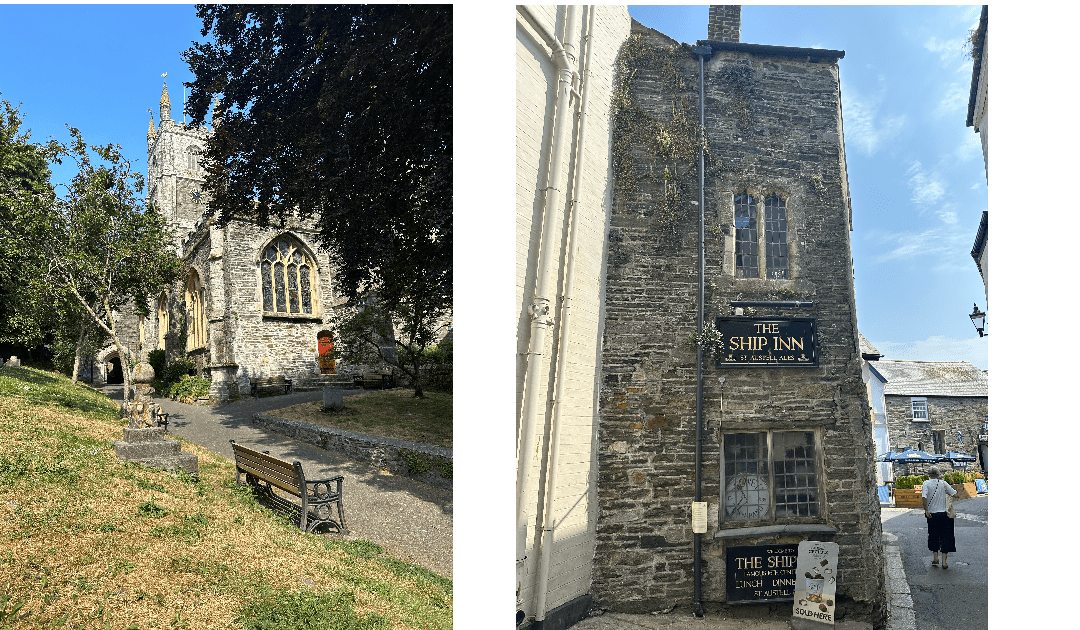I love exploring old buildings. Since I discovered that my 10th great-granduncle was Sir Anthony Standen, an Elizabethan spy, I try and imagine him in those spaces. Claire and I have moored our sailing boat in Fowey Harbour. Two old building caught my attention. The church of St. Fimbarrus dates from the 14th century. The bishop named it after Saint Finn Barr. He visited Fowey on his way to Rome on pilgrimage.
Saint Finn Barr, also known as Saint Finbarr, was an Irish bishop and patron saint of Cork, Ireland. He lived during the 6th century and was known for his great piety, humility, and wisdom. Saint Finn Barr founded a monastery in Cork and is also said to have performed many miracles, including healing the sick and calming storms at sea.
One of the most famous stories about Saint Finn Barr is the founding of his monastery in Cork. Legend has it that when he arrived in the area, he climbed to the top of a hill and saw a silver bell floating in the air. He took this as a sign from God and decided to build his monastery on that spot. The bell is now known as the “Bells of Shandon” and is a popular tourist attraction in Cork.
Saint Finn Barr is remembered every year on September 25th, which is his feast day. On this day, the people of Cork celebrate with processions, music, and other festivities. Saint Finn Barr is an important figure in Irish history and his legacy lives on through the many churches and schools named after him.
Because I’m a sailor, I do like a saint who can calm storms at sea. So if the wind gets up, I shall call on Saint Finn Barr. The other building I mentioned is The Ship Inn, a 16th century tavern. Perhaps Sir Anthony had an ale there while on route to Cadiz with Robert Devereux Earl of Essex, or even when he sailed with him to Ireland. It’s possible. You can read about his adventures in my Sir Anthony Standen Adventures series.

